
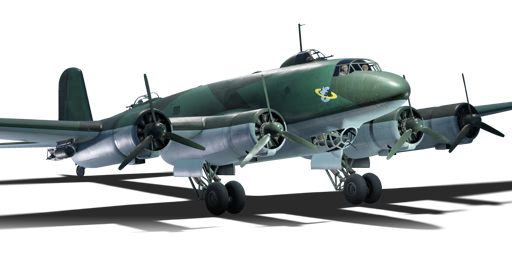


The Fw 200 C-1 "Condor" was the first military production variant of the Condor. It featured four supercharged BMW 132H engines each producing over 800 hp. Although the airframe was reinforced from the pre-production version, Condors had a habit of the fuselage splitting in two just behind where the wings meet during landings. Eight Condors were lost this way until the C-3 variant which had more reinforcement. The Condors were first delivered to Kampfgeshwader 40 (KG 40) who used the Condors for anti-shipping duties. Crews of the C-1 complained about the lack of defensive armament and protection for the fuel system. Nonetheless, the Fw 200 C-1 was quite dangerous when it made its debut. The Allies didn't have a good counter against the Condors until more CAM (catapult aircraft merchant) ships were sailing.
Introduced in Update 1.47 "Big Guns", the Fw 200 C-1 is a decent bomber. The Condor is a very big aircraft which allows it to carry a large bomb load, but is also very heavy. Its manoeuvrability leaves much to be desired as well as the overall flight performance. The Condor's top speed is decent although the structural limit is very low at only 450 km/h (279 mph), so players should be wary of diving. The Condor also lacks sufficient defensive armament with only four 7.92 mm turrets defending the entire plane.
flaps
flaps
flaps
brake
| Belt | Belt filling | Armor penetration (mm) at a distance: | |||||
|---|---|---|---|---|---|---|---|
| 10 m | 100 m | 500 m | 1000 m | 1500 m | 2000 m | ||
| AP-T/Ball/Ball/AP-I/AI | 9 | 8 | 6 | 3 | 0 | 0 | |
| AP/AP/AP/AP-T | 13 | 12 | 7 | 3 | 2 | 0 | |
| AP-I/AP-T/AP-I/AP-T | 9 | 8 | 6 | 3 | 0 | 0 | |
| Name | Weight | Slot | ||||
|---|---|---|---|---|---|---|
| 250 kg |  |  |  |  | ||
| 500 kg |  |  |  |  | ||
| 1,000 kg | 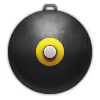 |  | ||||
| 500 kg | 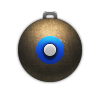 |  |  |  | ||
| 988 kg | 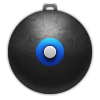 |  | ||||
| 2 × | 500 kg | 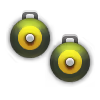 | ||||
| 2 × | 1,000 kg | 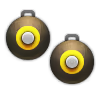 | ||||
| 2 × | 1,000 kg | 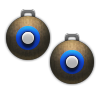 | ||||












Flight performance | |
|---|---|
Survivability |
|---|
Weaponry | |
|---|---|